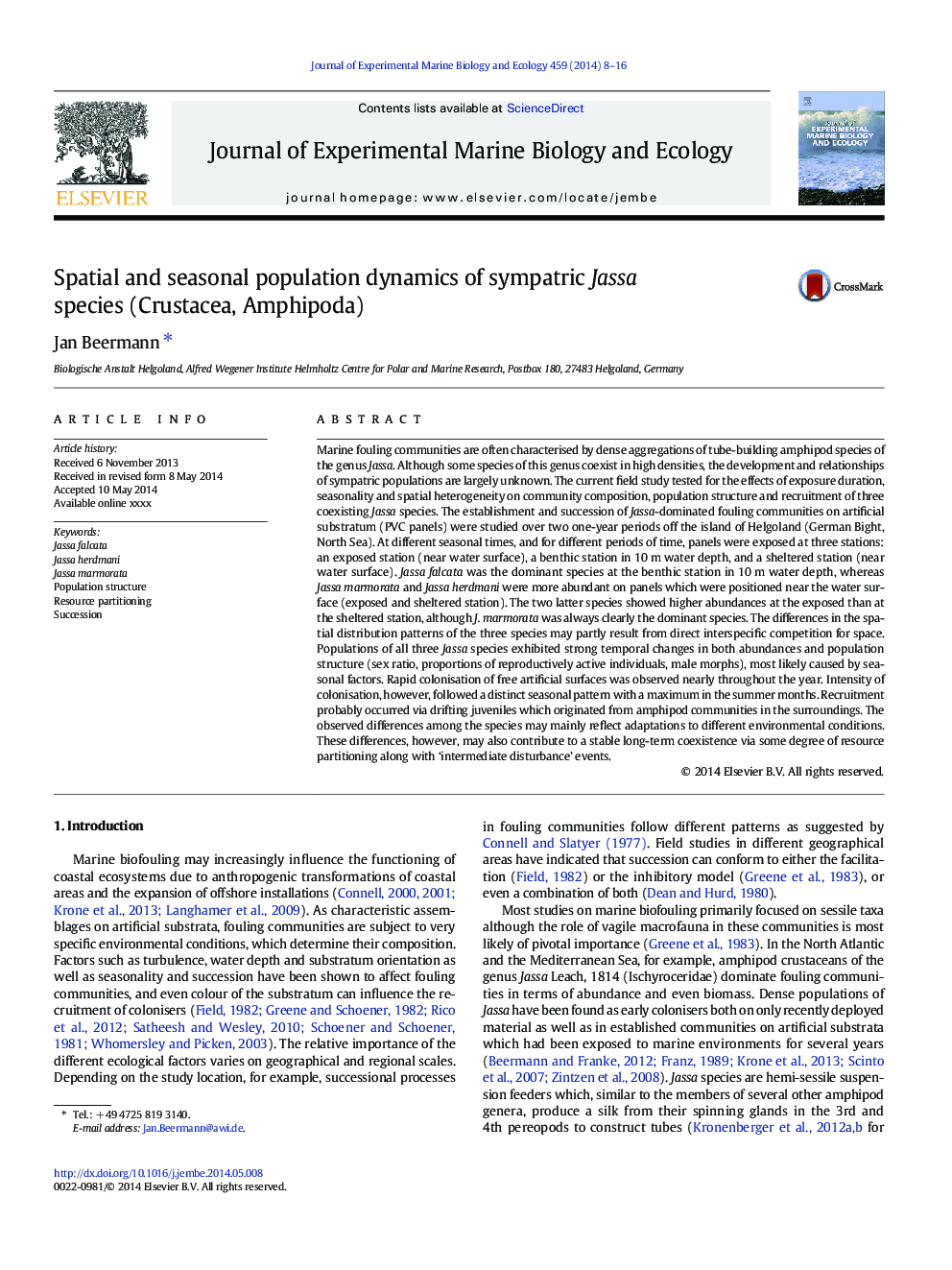| کد مقاله | کد نشریه | سال انتشار | مقاله انگلیسی | نسخه تمام متن |
|---|---|---|---|---|
| 6304096 | 1618416 | 2014 | 9 صفحه PDF | دانلود رایگان |
عنوان انگلیسی مقاله ISI
Spatial and seasonal population dynamics of sympatric Jassa species (Crustacea, Amphipoda)
دانلود مقاله + سفارش ترجمه
دانلود مقاله ISI انگلیسی
رایگان برای ایرانیان
کلمات کلیدی
موضوعات مرتبط
علوم زیستی و بیوفناوری
علوم کشاورزی و بیولوژیک
علوم آبزیان
پیش نمایش صفحه اول مقاله

چکیده انگلیسی
Marine fouling communities are often characterised by dense aggregations of tube-building amphipod species of the genus Jassa. Although some species of this genus coexist in high densities, the development and relationships of sympatric populations are largely unknown. The current field study tested for the effects of exposure duration, seasonality and spatial heterogeneity on community composition, population structure and recruitment of three coexisting Jassa species. The establishment and succession of Jassa-dominated fouling communities on artificial substratum (PVC panels) were studied over two one-year periods off the island of Helgoland (German Bight, North Sea). At different seasonal times, and for different periods of time, panels were exposed at three stations: an exposed station (near water surface), a benthic station in 10Â m water depth, and a sheltered station (near water surface). Jassa falcata was the dominant species at the benthic station in 10Â m water depth, whereas Jassa marmorata and Jassa herdmani were more abundant on panels which were positioned near the water surface (exposed and sheltered station). The two latter species showed higher abundances at the exposed than at the sheltered station, although J. marmorata was always clearly the dominant species. The differences in the spatial distribution patterns of the three species may partly result from direct interspecific competition for space. Populations of all three Jassa species exhibited strong temporal changes in both abundances and population structure (sex ratio, proportions of reproductively active individuals, male morphs), most likely caused by seasonal factors. Rapid colonisation of free artificial surfaces was observed nearly throughout the year. Intensity of colonisation, however, followed a distinct seasonal pattern with a maximum in the summer months. Recruitment probably occurred via drifting juveniles which originated from amphipod communities in the surroundings. The observed differences among the species may mainly reflect adaptations to different environmental conditions. These differences, however, may also contribute to a stable long-term coexistence via some degree of resource partitioning along with 'intermediate disturbance' events.
ناشر
Database: Elsevier - ScienceDirect (ساینس دایرکت)
Journal: Journal of Experimental Marine Biology and Ecology - Volume 459, October 2014, Pages 8-16
Journal: Journal of Experimental Marine Biology and Ecology - Volume 459, October 2014, Pages 8-16
نویسندگان
Jan Beermann,